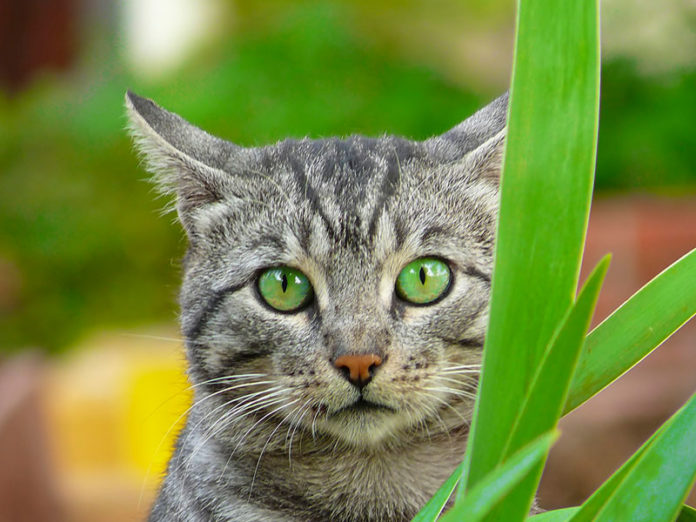Feline homing instincts

Many lost or relocated cats are able to find their way home again, even over vast distances using their homing instincts.
Feline behavior is often mysterious, misunderstood, and even miraculous. One of the most intriguing characteristics of cats is their ability to find their way home across vast distances. These homing instincts are well studied in many other animal species, including birds, bees and fish. But how lost or relocated cats find their way home remains a mystery.
Scientists have learned that migratory birds like geese use visual cues such as rocks and landscapes, as well as the orientation of the sun, moon and stars, to find their way. Salmon, meanwhile, use scent cues to return to their home waters thousands of miles away. Still other animals use magnetic cells in their brains to orient them to true north. Exactly how cats do it, however, remains a mystery. To date, all we have on this topic are anecdotal stories and two old and obscure studies:
1. The oldest of the studies, conducted by Francis H. Herrick in 1922, tested the homing instincts of a female cat who was motivated to return home because she had kittens there. She successfully made her way home seven times from seven different locations ranging from one to three miles away.
2. A 1954 study conducted by H. Precht and E. Lindenlaub in Germany involved taking cats to the center of a circular maze with six equally-spaced exits – 60% of the time, the cats chose the exit nearest the direction their homes were in, when the homes were in a range of 3.1 miles.
Anecdotal stories abound
We’ve all heard accounts of cats with unerring homing instincts. For example, the story of Sushi made headlines in the animal world in September of 2013 when she turned up two years after getting lost during her family’s evacuation from out-of-control wildfires near Austin, Texas. No one knows where she had been all that time, but wherever it was, she brought a feral black kitten home with her!
The PBS Nature program “Extraordinary Cats” has highlighted some incredible journeys made not just once, but multiple times, by various displaced felines:
• After moving with his family to a new house eight miles away, Pilsbury went right back home again – 40 times – and had to be retrieved by his family on an almost weekly basis.
• Tigger made the three-mile round trip to his old home an amazing 75 times, no mean feat considering he only has three legs.
• Ninja moved with his family from Farmington, Utah to Mill Creek, Washington – a huge distance. He left the new house and showed up in Utah one year later, after travelling a distance of 850 miles.
What are the theories?
There’s no denying that cats have an unerring homing instinct, but how can it be explained? Until more studies are done, there’s no definitive answer, but there are some interesting if disparate theories.
“Probably all cats possess some degree of ‘homing instinct’, but some may be genetically predisposed to having a better sense of direction than others,” says Alice Moon-Fanelli, PhD, CAAB, a certified animal behaviorist. “Whether or not they use this skill is likely influenced by experience; a feral (or free-roaming) cat will exercise the skill on a regular basis whereas an indoor cat that gets lost outside might be clueless and frightened. Motivation also probably influences a cat’s will to return ‘home’ – the presence of young, reliable shelter, food, and so on.”
Russell Hartstein, CDBC, CPDT, offers an interesting mix of theories. “Cats likely rely on their somatosensory system,” he says. “They may possess some unidentified geomagnetic polarity cellular structure, or perhaps it’s a mix of olfactory cues and magnetic fields.
“Another hypothesis that may be at play involves the disequilibrium that forms when closely-bonded individuals get separated,” Hartstein continues. “This phenomenon is illustrated by Bell’s Theorem, which proposes that ‘all electrons function in pairs, with each electron spinning in the opposite direction of the other electron’. When the spin of one electron is changed, the other senses it and alters its direction according to the first one. In space experiments, when the spin of one electron was changed, its bonded electron back on earth correspondingly and immediately altered its own spin. Perhaps when the physical bond between a cat and his family is disrupted by separation, this disequilibrium helps to drive them back to homeostasis.”
This may seem like a stretch, especially as it doesn’t explain why humans don’t possess a homing instinct, but it’s an intriguing theory. Hopefully, more studies will eventually be done on how and why cats are able to traverse huge distances and know exactly where they’re going. In the meantime, we can continue marveling at this mysterious ability!




